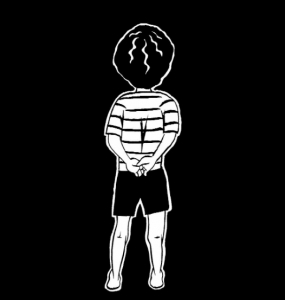
Graphic Novels as a Medium

What is a Graphic Novel?
/ˈɡrafik· nävəl / – A novel produced in a comic-strip format typically accompanied with various illustrations and speech bubbles.
Different Styles of a Graphic Novel
Manga
|
Superhero Stories
|
Personal Narratives
|
Non-Fiction
|

Brief Origins of the Graphic Novel Genre
 While comic historians have argued what is considered a graphic novel, as an art form, illustrations have existed as a mode of communication even before the birth of written history. As Stan Tychinski wrote in his piece on A Brief History of the Graphic Novel, he claims that prior to this century, reading was considered a luxury as many people were illiterate. Subsequently, the advent of the Industrial Revolution gave the working class more time to leisure. As such, many had looked into various publications such as the newspaper medium which included drawings and various cartoons. These cartoons typically address social ills or political agendas through humor, albeit in a few strips. While these comic strips may not qualify as a ‘graphic novel’ due to their shortness, the oldest example of the graphic novel can be found in Rodolphe Töpffer’s The Adventures of Mr. Obadiah Oldbuck. Originally published in 1828, this graphic novel had targeted “children and the lower classes.” Particularly, this graphic novel had juxtaposed heavy topics such as suicide and felonies with often light and warm illustrations.
While comic historians have argued what is considered a graphic novel, as an art form, illustrations have existed as a mode of communication even before the birth of written history. As Stan Tychinski wrote in his piece on A Brief History of the Graphic Novel, he claims that prior to this century, reading was considered a luxury as many people were illiterate. Subsequently, the advent of the Industrial Revolution gave the working class more time to leisure. As such, many had looked into various publications such as the newspaper medium which included drawings and various cartoons. These cartoons typically address social ills or political agendas through humor, albeit in a few strips. While these comic strips may not qualify as a ‘graphic novel’ due to their shortness, the oldest example of the graphic novel can be found in Rodolphe Töpffer’s The Adventures of Mr. Obadiah Oldbuck. Originally published in 1828, this graphic novel had targeted “children and the lower classes.” Particularly, this graphic novel had juxtaposed heavy topics such as suicide and felonies with often light and warm illustrations.
Social Commentary in Baddawi
Graphic Novels as a Tool for Unpacking Social Commentary
The combined use of images and words for political and social commentary becomes a storied tradition revitalized by graphic novels’ entrance into the literary market. Baddawi is yet another example of real-life creating real emotion which can (and should) develop empathy. Her creative work primarily explores issues related to diaspora, refugees, history, memory, and borders.
Examples of Social Commentary in Baddawi
|
1 |
2 |
3 |
|
4 |
5 |
6 |
- This page goes well beyond just the written words. Ahmad is reaching towards Palestine but is finding the road to be rough and cracked. He’s stuck in a world the is crumbling and falling around him.
- The horrors that Ahmad reads about in the newspaper are places that he knows, they’re places that he’s visited. The black silhouettes on the page show the brutal death of the three Plo leaders.
- This page jumps back and forth between Ahmad’s cousin and Israel fighter planes. It shows the danger that these people are in every day. They have to go about their day trying to ignore the fact that their lives are on the line.
- This section appears right after Ahmad lost his friend, Abu Muhammad. It shows that Ahmad can’t escape the fear of Israel, even in his dreams. The visuals of tanks, planes, and guns, while Ahmad is asleep, show that this is what he dreams about. The nightmare that occurs in his everyday life continues in his dreams.
- This page is an introduction to the story. The open palms represent the start of prayer and emphasis the importance of religion and religious identity.
- Based on the work of Naji Al-Ali, the backward-facing boy that appears on the cover represents the struggle of the Palestinian people.
Examples of Social Commentary in Other Graphic Novels
PersepolisWritten by Marjane Satrapi, this autobiographical graphic novel depicts the harrowing events that took place in Iran. Specifically placed during and after the Islamic Revolution, Persepolis takes the perspective of a young Satrapi who’s coming of age is rife with extremist politics, ideological conflicts, and ultraviolence. Despite this, Satrapi gains a sense of self which allows her to gravitate towards ideas such as equality. These conflicting ideologies allow her to rebel and resist against an oppressive Shah regime. Accompanying the story is black and white cartoonish imagery which allows the reader to see what the author originally saw as a child. |
Footnotes in GazaA journalistic graphic novel written by Joe Sacco describes the author’s journey to get to the backside of the two forgotten incidents that took place in Khan Yunis and in Rafah in the Gaza Strip in November 1956. It is a novel that digs deep and explores the relationship between past and present. The graphic novel is a useful source to touch on important social-political issues. This medium offers opportunities to evaluate information that is communicated through prints and images. |
Bitch PlanetBitch Planet is a fictional graphic novel that highlights the absurdity of the gender roles that our patriarchal society instills on women. Women who stray from these societal norms are sent to Bitch Planet, a new world created for the correction of troublesome women. The novel follows characters who are trying to break from the confines of Bitch Planet by participating in a televised game show called Megaton on Earth. |
Bridget Callaghan, Michael Ortizo, & Yeliz Kurt, 2019















